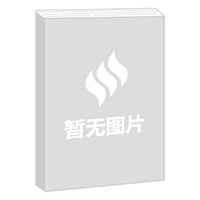1 Introduction
1.1 Definition and Content of Gas Discharge
1.2 History of Electrical Discharge Research
1.3 Classification of the Discharge
1.4 Application of the Discharge
1.5 Definition and Content of Gas Insulation
1.6 History and Application of Sulfur Hexafluoride
1.7 Situation and Development of Environmentally Friendly Insulating Gas
References
2 Fundamentals of Gas Discharge
2.1 Charged Panicles in the Process of Gas Discharge
2.1.1 Photons
2.1.2 Electrons
2.1.3 Ground State Atoms (or Molecules) and Excited Atoms (or Molecules)
2.1.4 Positive and Negative Ions
2.2 Movement of Charged Panicles
2.2.1 Thermal Motion of Charged Particles
2.2.2 Diffusion Motion of Charged Particles
2.2.3 Drift Motion of Charged Particles
2.3 Collision Interactions of Charged Particles
2.3.1 Classification of Collision Between Panicles
2.3.2 Collision Energy Transfer
2.3.3 Collision Characteristic Parameters
2.3.4 Elastic Collisions of Electrons, Ions and Atoms
2.3.5 Excitation and Ionization of Gas Atoms
2.3.6 Gas Particle Excitation Transferring
2.3.7 Disappearance of Charged Particles
References
3 Fundamental Theory of Townsend Discharge
3.1 Formation and Development of Electronic Avalanche
3.1.1 Formation of Electronic Avalanche
3.1.2 a Process
3.1.3 γ Process
3.2 Self-Sustaining Discharge Criterion
3.2.1 Gas Discharge Volt-Ampere Characteristics
3.2.2 From Non-Self-Sustaining to Self-Sustaining Discharge
3.2.3 The Condition of Self-Sustained Discharge
3.3 Paschen's Law
3.3.1 Paschen's Law
3.3.2 The Impact of Impurity Gases on the Breakdown Potential
3.3.3 The Impact of Electrodes on Breakdown Voltage
3.3.4 The Impact of Electric Field Distribution on Breakdown Voltage
3.3.5 The Impact of External Ionization Source on Breakdown Potential
3.4 Townsend Discharge Experiments
3.4.1 The Steady-State Townsend Experiment (SST)
3.4.2 Pulse Townsend Method (PT)
References
4 Fundamental Theory of Streamer and Leader Discharge
4.1 Streamer Discharge Mechanism
4.1.1 Basic Properties of Spark Discharge
4.1.2 Streamer Discharge
4.2 Long Gap and Leader Discharge
4.2.1 Experimental Study on the Long Gap Discharge in Air
4.2.2 Discharge Process in Non-uniform Electric Field
References
5 Theoretic Analysis Methods for Modeling Gas Discharge
5.1 Monte Carlo Simulation
5.1.1 Introduction of General Monte Carlo Simulation.
5.1.2 Monte Carlo Simulation of Electron Avalanche Development
5.1.3 Electron Swarm Parameters from Monte Carlo Simulation
5.2 Boltzmann Equation Method
5.2.1 Introduction to Boltzmann Equation Method
5.2.2 Electron Swarm Parameters Calculated by Boltzmann Equation Method
References
6 Dielectric Strength of Atmosphere Air
6.1 Breakdown Voltage Characteristics in Uniform and Quasi-uniform Electric Fields
6.1.1 Breakdown Characteristics Under Continuous Voltages
6.1.2 Breakdown Characteristics Under Lightning Impulse Voltages
6.1.3 Breakdown Characteristics Under Operating Impulse Voltage
6.2 Breakdown Characteristics in Extremely Nonuniform Electric Fields
6.2.1 Breakdown Characteristics Under Continuous Voltage
6.2.2 Breakdown Characteristics Under Lightning Impulse Voltage
6.2.3 Breakdown Voltage Under Operating Impulse Voltage
6.3 Methods to Improve Insulation Strength in Air
6.3.1 Improve the Shape of Electrodes
6.3.2 Use of Electric Field Distortion by Space Charges.
6.3.3 Use of Barrier in Extremely Nonuniform Electric Fields
6.3.4 Solid Insulating Coating Layer
6.3.5 Use of High Pressure
6.3.6 Use of High Vacuum
6.3.7 Use of High-Dielectric-Strength Gases
References
7 Insulation Characteristics of Sulfur Hexafluoride (SF6)
7.1 Basic Physical and Chemical Properties of SF6
7.1.1 Molecular Structure
7.1.2 Gas State Parameters
7.1.3 Electronegativity and Thermal Performance
7.1.4 Decomposition of SF6
7.2 Breakdown Characteristics of SF6
7.2.1 Breakdown Characteristics in Uniform Electric Fields
7.2.2 Breakdown Characteristics in Quasi-uniform Fields
7.2.3 Breakdown Characteristics in Extremely Non-uniform Fields
7.3 Surface Discharge Characteristics of Solid Insulators in SF6
7.3.1 Effects of Electric Field Distribution
7.3.2 Other Factors Affecting Solid Surface Discharge Characteristics
7.4 Factors Affecting Insulation Properties of SF6
7.4.1 Effects of Gas Pressure on Breakdown Voltage of SF6
7.4.2 Effect of Electric Field Uniformity on Breakdown Voltage of SF6
7.4.3 Effect of Polarity on Breakdown Voltage of SF6...
7.4.4 Effect of Surface Roughness on Breakdown Voltage of SF6
References
8 Insulating Characteristics of SF6 Gas Mixtures
8.1 Improvements of Gas Mixtures on Defects of SF6
8.1.1 Liquefaction Temperature
8.1.2 Insulating Properties
8.1.3 Cost of Gas
8.1.4 Environmental Protection
8.2 Mixing Characteristics of SF6 Gas Mixtures
8.2.1 Mixing Ratio
8.2.2 Changes of Mixing Ratio with Height
8.2.3 Mixing Process 8.2.4 Recovery of Gas Mixtures
8.3 Insulation Properties of Binary Mixtures of SF6 with Other Gases
8.3.1 Electrical Strength of SF6/N2 Gas Mixtures
8.3.2 Electrical Strength of SF6/CO2 Gas Mixtures
8.3.3 Contrast Between SF6/N2 and SF6/CO2
8.4 Other Multivariate SF6 Gas Mixtures
8.4.1 SF6/He and SF6/Ne Gas Mixtures
8.4.2 SF6/Ar, SF6/Kr and SF6/Xe Gas Mixtures
8.4.3 Gas Mixtures Consisting of SF6 and Gases Containing Halogen Elements
References
9 Insulating Characteristics of Potential Alternatives to Pure SF6
9.1 Research Advances on Substitutes for SF6
9.1.1 Significance of Research
9.1.2 Current Research on Alternatives to SF6 Gas
9.2 Insulation Properties of c-C4F8 and Its Gas Mixtures
9.2.1 c-C4F8/CO2 Discharge Characteristics and Analysis.
9.2.2 c-C4F8/CF4 Discharge Characteristics and Analysis.
9.2.3 c-C4F8/N2 Discharge Characteristics and Analysis..
9.2.4 c-C4F8/N2O Discharge Characteristics and Analysis,
9.2.5 The Influence of CO2, CF4, N2 and N2O on the (E/N) lim of c-C4F8
9.3 Insulation Performance of CF3I and Its Gas Mixtures
9.3.1 Insulation Performance Analysis of CF3I
9.3.2 Feasibility Analysis of CF3I and Its Gas Mixtures Used in C-GIS
9.4 Insulation Performance of Other Potential Alternative Gas
9.4.1 Perfluoropropane (C3F8)
9.4.2 Nitrous Oxide (N2O)
9.4.3 Trifluoromethane (CHF3)
9.4.4 Fluorinated Carbon (CF4)
Reference
10 Development Prospects of Gas Insulation
10.1 Three Stages of Development of Gas Insulation
10.1.1 Application and Development of Pure SF6 Gas
10.1.2 Application and Development of SF6 Gas Mixtures
10.1.3 Development of Research on Environmentally Friendly Insulation Gas
10.2 Research and Development of c-C4F8 and Its Gas Mixtures
10.2.1 Properties of c-C4F8
10.2.2 Further Research on c-C4F8 and Its Mixtures Discharge Mechanism
10.2.3 The Application and Development of c-C4F8 and Its Gas Mixtures
10.3 Study and Development of CF3I and Its Gas Mixtures
10.3.1 Physical Properties of CF3I Gas
10.3.2 Further Study on Insulation Properties of CF3I Gas
10.3.3 Research Tendency and Application of CF3I and Its Gas Mixtures
References
Index




















